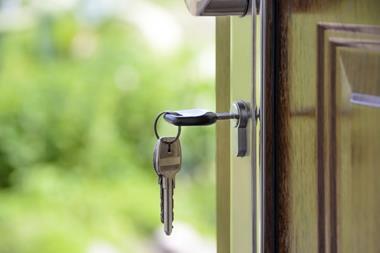Allianz Real Estate plans to upgrade 57 of its 500 directly held assets as part of a new plan to reduce by a quarter global carbon emissions by 2025.
The assets, located mostly in Europe, were identified as part of the institutional investors’ first step to achieve net-zero carbon emissions from its global portfolio by 2050, in line with the Paris Agreement.
Raphael Mertens, chief risk officer at Allianz Real Estate, said: “We will start by focusing on our 100%-owned assets, where we have identified the first 57 assets that will be redeveloped and upgraded over the next three years.
“The majority of these assets are in Europe, because a significant portion of our US and [Asia-Pacific] portfolios are part of joint ventures or indirect holdings, so we will engage with our partners to enact change where possible.”
In mid-January, the Allianz group announced its first interim target on the way to climate neutrality in the investment of policyholder funds by 2050, with a 25% cut in greenhouse gas emissions for selected asset classes by 2025, compared to 2019.
Real estate investments are to come onto a 1.5-degree path by 2025, according to that plan.
Allianz Real Estate said in its announcement today that it was using independent CRREM and GRESB data and benchmarking tools in line with initiatives such as the SBTi and the Net-Zero Asset Owner Alliance, in order to meet its carbon-emissions and energy-efficiency targets.
Mertens said a reduction of emissions in the real estate sector – which accounts for approximately 40% of global greenhouse gas emissions – would have a considerable impact on global decarbonisation.
“Our position, size and influence allows Allianz Real Estate to lead by example,” he said.
The 57 properties – amounting to a net asset value of €6.9bn and around 20% of the direct equity portfolio – have been picked from Allianz Real Estate’s portfolio of more than 500 directly held property assets.
“We screened our portfolio and selected impact assets, which have an impact on our CO2 emissions – these are larger assets, and they can be older assets that are in need of deep refurbishment in next two to three years, and also those with a new lease coming up,” Mertens said. “We want to use this an an opportunity to speak to our clients about achieving lower emissions.”
Alongside the refurbishment and redevelopment of the 57 “impact” assets, he said the other elements of Allianz Real Estate’s plan to reach the 2025 interim target included an approach to new acquisitions.
“When we buy something, we will ensure we understand the energy efficiency and carbon footprint of that building and the sustainability performance in general, and we will compare it to our benchmark,” he said, adding that the firm would take account of the capital expenditure needed to bring the asset into line.
Another key lever will be screening the existing portfolio for energy efficiency, and also rolling out a structured process of implementing relatively straight-forward improvements such as LED lighting, he said.
“Where possible, we will be talking to tenants about what they want to do in order to reduce emissions in other areas of their activity, also convincing them to go in the same direction as us,” he said.
Mertens said it was relatively easy for a real estate investor to decarbonise if it was involved in only one region and sector.
“However, we have a global portfolio with a lot of assets, and we are including tenant areas and joint ventures in our target setting and management programme, so that’s pretty complicated with many stakeholders – and I think still our decarbonisation targets are pretty ambitious in that respect,” he said.
“We haven’t factored in options such as offsetting, as we really want to reduce the carbon footprint through energy efficiency programmes as well as the use of renewable energy.”
CEO François Trausch said the firm’s main focus was on carbon emissions and energy efficiency, but it was also looking at social and wellbeing standards across the portfolio.
To read the digital edition of the latest IPE Real Assets magazine click here
















